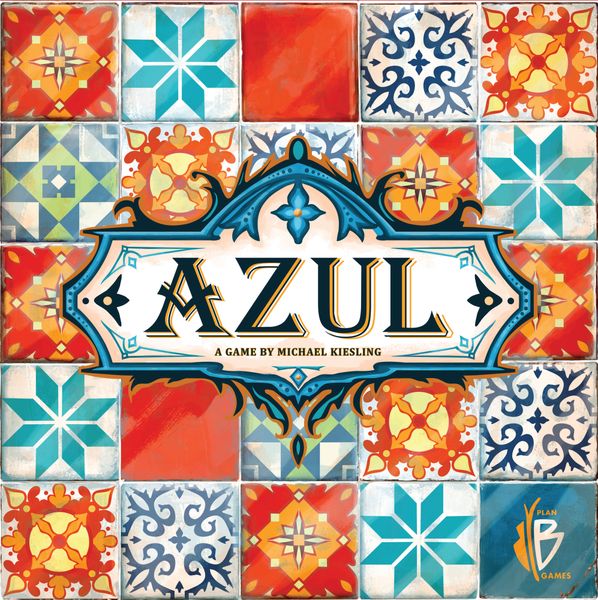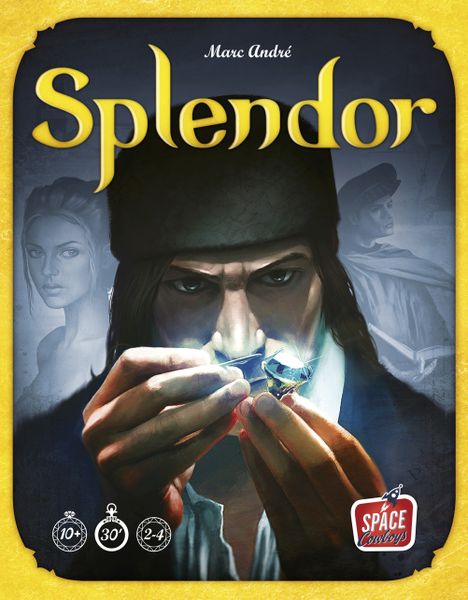
| Designer | Michael Kiesling |
| Genre | Abstract Strategy |
| Number of Players | 2-4 |
| Play Time | 30-45 minutes |
| Initial Review Date | 3/16/21 |
| Last Updated | 3/16/21 |
In this board game players score points by creating patterns with tiles on personal player boards. However, the supply of tiles is limited and it’s first come first served. Additionally, tiles can only go in certain places and so you can find yourself backed into a corner where your taking tiles you can’t play, causing you to take penalties.
Setup
Each player is given a board and a scoring marker. Then several drink coaster sized disks are placed in the middle of the table (such that everyone can reach them). The number of disks placed varies based on the number of players. Then you fill each disk with 4 tiles from the bag. Finally, the unique tile (with a number 1 on it) is placed in the center of the table and play begins.
Gameplay
The game is played in rounds with each round consisting of 2 phases.
Phase 1 – Tile Collection
Each player chooses a location (either one of the disks or the middle of the table) and selects one of the tiles from that location. They then collect that tile and any tiles identical to that tile at that location. If the center of the table is chosen and the unique tile is present they must also take that tile in addition to whatever they claim.
If one of the disks was chosen, then any tiles remaining on the disk are dumped into the middle of the table and that disk can no longer be chosen for that round.
The player must now place the tiles they choose on to a row. Each row can only hold so many tiles however and any extras are placed on the bottom of the board (the unique number 1 tile automatically goes here). The tiles on the bottom row will determine your penalty for that round.
Once a tile has been placed on a row, any remaining empty spots can only be filled with tiles that match what has already been placed here.
The current phase continues with each player taking tiles until all of the tiles have been taken. Then all players move to phase 2
Phase 2 – Scoring
Each player now scores their completed rows. If a player has filled in all of the spots in their row they take 1 of the tiles and place it on the spot that corresponds to the tile pattern used to fill that row. So, if all red tiles were used then 1 of the red tiles is placed on the red square on the wall section, for that row. Now that the spot is full, tiles of that type may no longer be used to fill that row.
Then you look to see if the tile you placed is next to any other tiles. If there are no other tiles adjacent to the one you placed then you get 1 point. If there are tiles adjacent to it then you then score points equal to the number of consecutive tiles contained in that row, both vertically and horizontally.
A penalty is then applied to your score equal to the value above the right most tile on the penalty row. So 5 tiles on this row would result in a -2 to your current score.
If no one has completed a horizontal line of 5 consecutive tiles, then any tiles that were collected that round (and were not placed on the wall section are set aside. Then the disks get refilled with 4 tiles each. Then, who ever has the unique 1 tile places it back in the center and is the start player for the new round.
Winning
The player with the most points wins. However, there are some bonus points that can be scored once the game has ended.
- 2 bonus points for every complete horizonal row of 5 consecutive tiles.
- 7 bonus points for every completed vertical row of 5 consecutive tiles.
- 10 points for every set of 5 of the same pattern of tile on your wall.
Conclusion
This is a really solid game. The components are well made with bright colors that are easy to distinguish. It isn’t difficult to teach but there is a surprising amount of player interaction. Mainly in the form of other players taking the tiles you wanted. Also, when tiles run low, because everything is public other players can see who’s currently winning and what they need and can not only deny that player the tiles they need by taking them. But you can even force a player to take tiles they can’t place, forcing them to take a penalty. All this to say there is strategy beyond just trying to figure out how to Tetris your tiles together to score you as many points as possible.
Learning Curve |
| |
Rating |
6/10 |
| |
8/10 |

